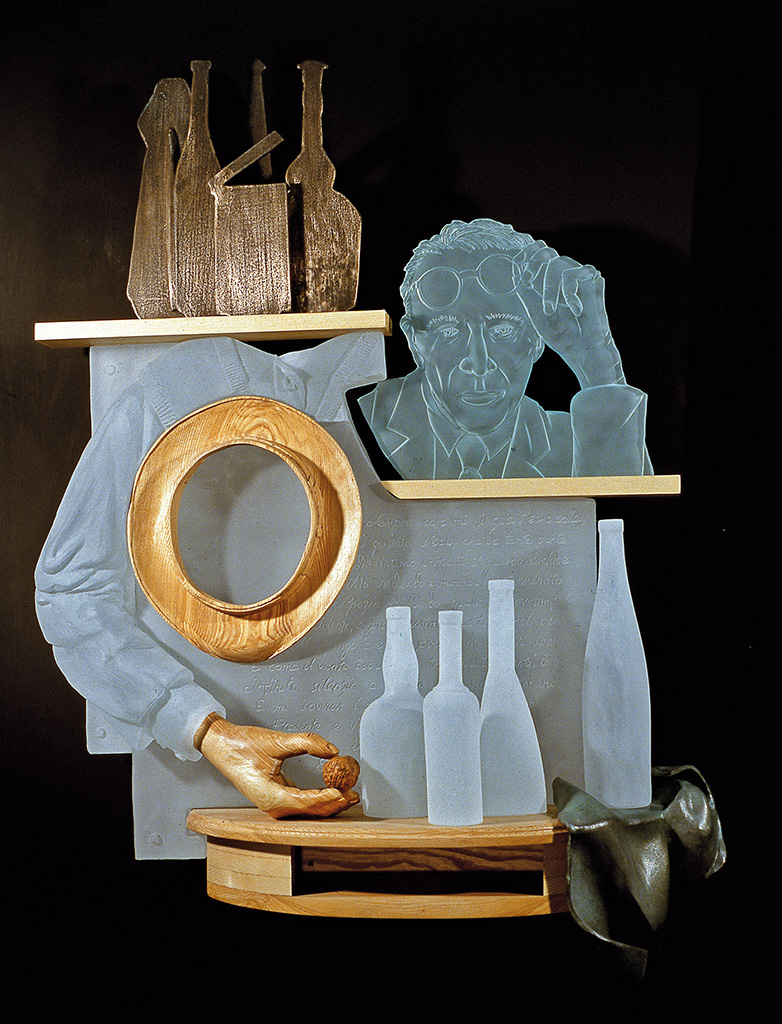L’Infinito (Giorgio Morandi)
Materials Cast glass, sandblasted glass, bronze, and wood
Giorgio Morandi, an Italian painter who remained aloof from the mode and style of his time was born in Bologna in 1890 and it was there that he spent the balance of his life. In fact he stayed in the very same apartment in Via Fondazza attended to by his mother and then his sisters until his death in 1964.
Morandi’s still-lifes, for which he is best known, were a dialog between a constant cast of characters consisting of bottles, boxes, bowls, and an occasional outside object. His method of working consisted of taking these shapes cut out of flat tin and agonizingly manipulating them, often taking days or even weeks to compose his picture. He would then go to his collection of real objects recompose the scene and watch how light and shadow played on them in order to make his final small corrections. Having imprinted the image in his mind he would then paint the scene often quite rapidly. A careful look at Morandi’s work over the years reveals the use of these same objects constantly arranged and rearranged One of the most important intellectual influences on Morandi was the early 19th century poet Giacomo Leopardi. Morandi kept a book of his poems on his bedside table. In the heart of my sculpture on the flat surface of the white glass torso I have carved the text of his most famous poem L’Infinito taken from the original handwritten copy found in the municipal archives of the city of Bologna.
The bronze objects in the upper left can be rearranged; there are also several extra pieces to slightly change the configuration. The same holds true for the three-dimensional cast glass bottles on the shelf at the front right. There is also a low shelf out of the picture frame, which holds the bottles and objects not being used and is part of the sculpture. The crownless hat enters the sculpture because of a wonderful photograph taken of Morandi’s studio and included in the book “Atelier Morandi” by Luigi Gherry.
